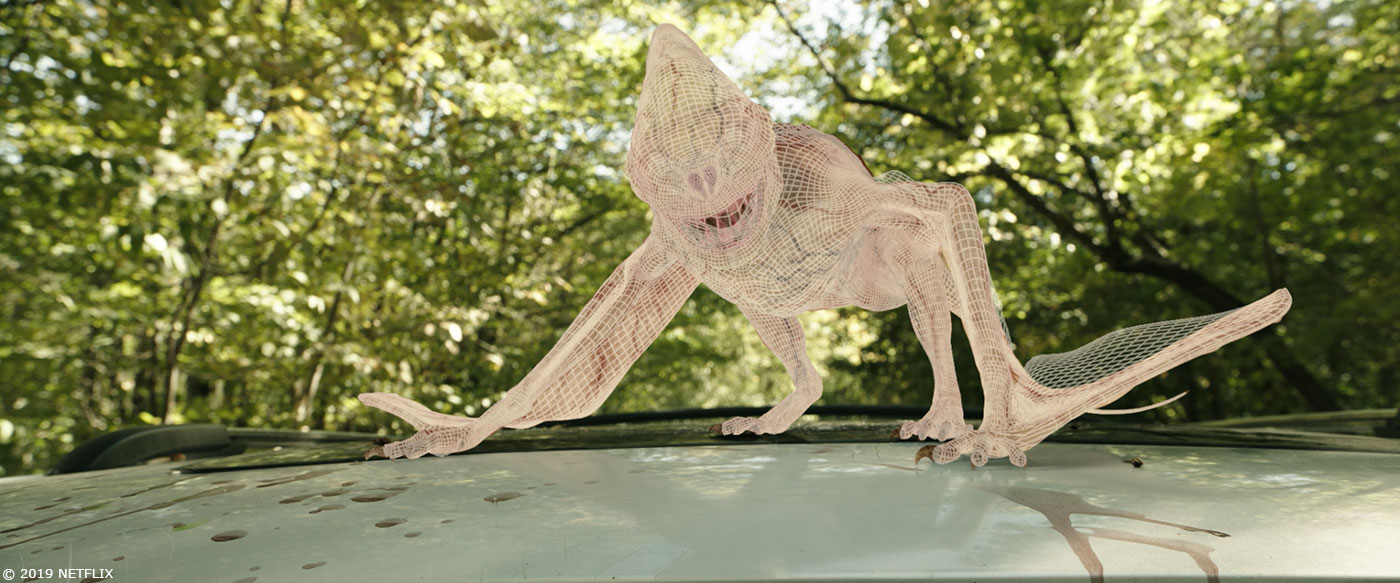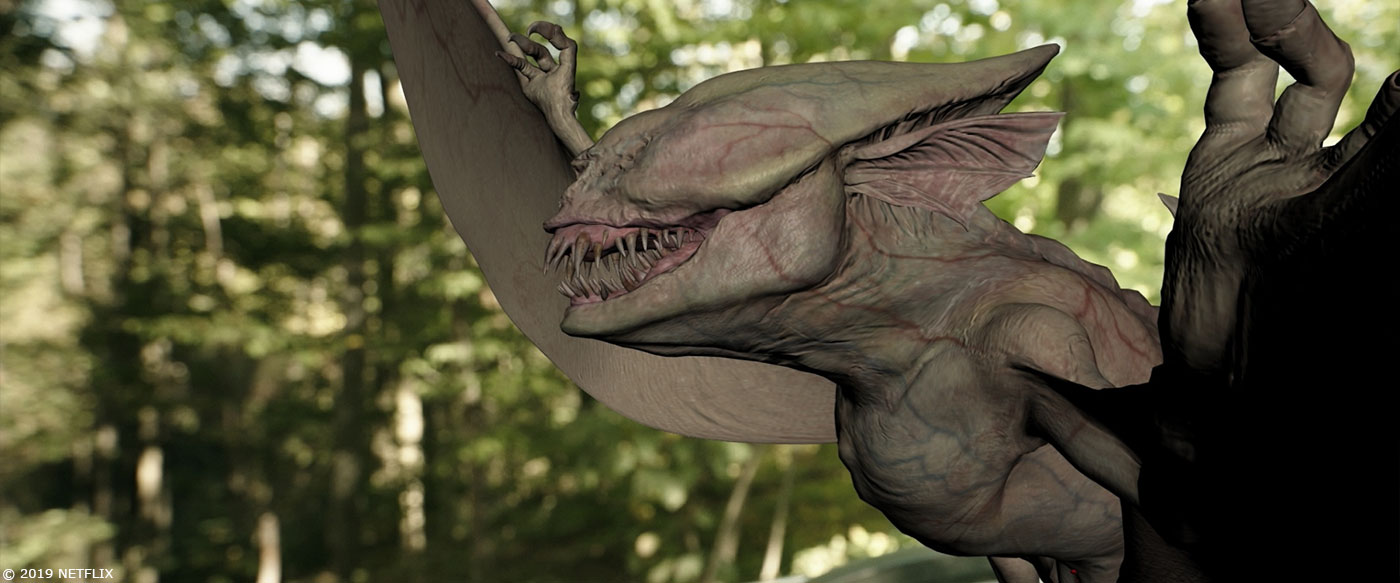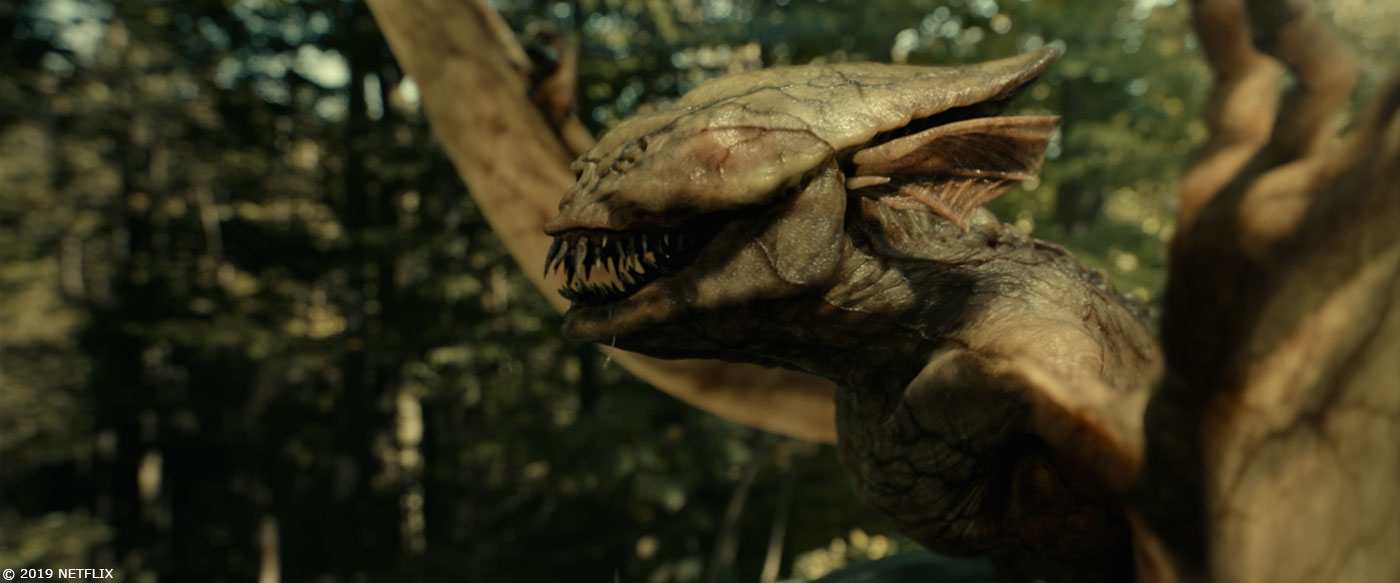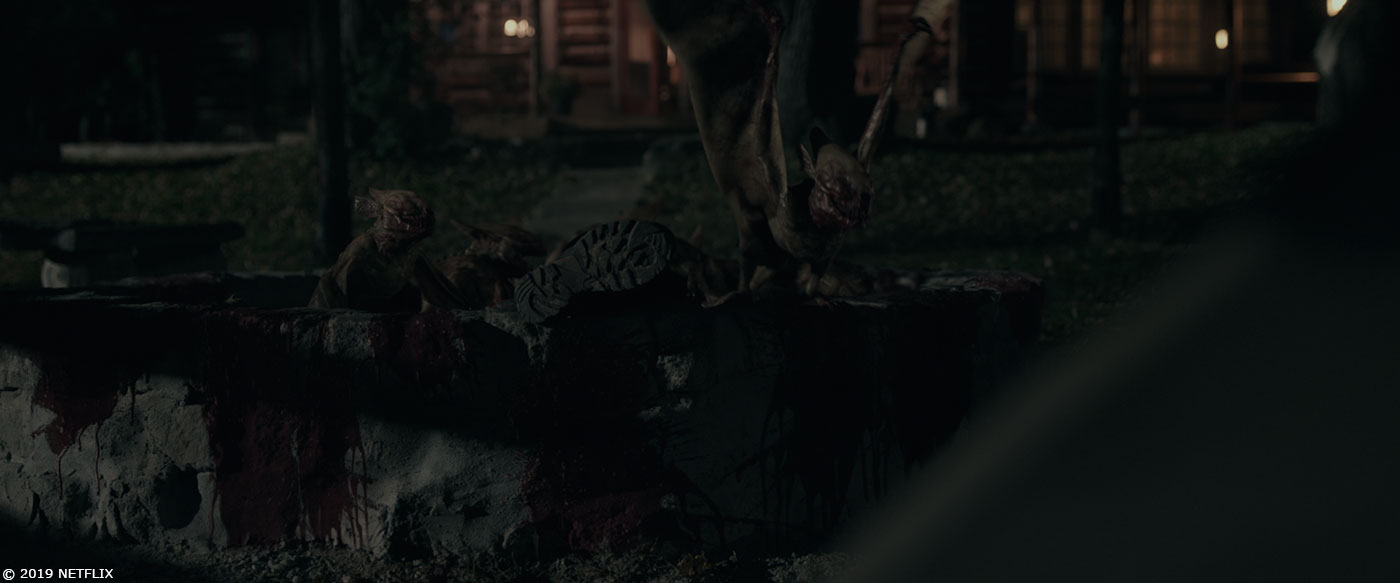Matt Glover began his career in visual effects in 2007 at Mr. X. He has worked on many films such as DEATH RACE, SCOTT PILGRIM VS. THE WORLD, TRON: LEGACY, ROBOCOP and THE STRAIN.
How did you get involved on this show?
Constantin Films are a longtime collaborator with Mr. X – having worked on the RESIDENT EVIL franchise and POMPEII. Producer Robert Kulzer got us involved. I had just finished supervising the final season of THE STRAIN – and jumped at the chance to be involved with the film. I was a big fan of John – especially his cinematography for James Wan’s horror films like INSIDIOUS, THE CONJURING, and DEAD SILENCE – the latter of which Mr. X completed the VFX for as well.
How was the collaboration with director John R. Leonetti?
A dream. John is one of, if not the most, collaborative filmmakers we’ve ever had the privilege of working with. The dialogue is completely open, and nothing is off the table. He actively solicits other people for their ideas and input – and I think every member of the crew felt part of the film we were making.
What was his approach and expectations about the visual effects?
John was pretty clear with us that we would be essentially adding another actor to the film. The Vesp creature would be another main character in the story and we wouldn’t be hiding him. We were going to show him early and often – with the first attack scene coming in broad daylight – in close-up. The van attack was crucial because it establishes the anatomy of the creature, for not just the audience – but the characters themselves.
How did you organize the work with your VFX Producer?
Greg “Ziggy” Sigurdson and I had just finished working on THE STRAIN together – and transitioned directly into pre-production on THE SILENCE. We didn’t really skip a beat – and had already established a great working relationship that worked to our strengths.
How did you split your work between you two and amongst the Mr. X offices?
Mr. X Toronto acted as the main studio – with invaluable support from our Bangalore and Montreal offices. The asset work and most of the animation and compositing was done in Toronto. Bangalore handled some of the CG aircraft shots – hovering helicopters, jets screeching overhead. As well as most of the TV news screen composites and shots of characters on their iPads. They also did some great work filling out the finale – with the Vesps swirling in the BG as the family fight for survival. Montreal contributed hero animation work for some of the Vesps scenes – which was great – due to not just the sheer volume of shots, but the number of creatures in any given shots.
Can you tell us more about the previz and postviz work?
We prevized the SUV crash – which was critical for the practical staging of the aftermath. The filmmakers asked for our help in determine how far the SUV should roll, and what kind of damage would it sustain. We animated the whole scene based on storyboards – using the height of the practical hillside, the weight of the vehicle etc. to realistically show how the crash would unfold. We tweaked each shot from there to make it a little more cinematic.
For the Vesps – we didn’t do a lot of shot or sequences specific previz – but a lot of RnD and anim testing was done – to inform how the creatures would move or interact with the characters in a given scene or environment.
How did you work with the art department to design the creatures?
Jordan Nieuwland – a concept artist at Mr. X – worked directly with John and the producers developing the look for the creatures. Working from their feedback, our own ideas, the descriptions from the book – we explored a lot of different designs. Once a design was settled on – everyone agreed fabricating a stand-in version for use on-set, would be hugely helpful. That’s where Paul Jones and the Makeup Dept. came in! Paul sculpted and cast a beautiful hero model for us. We used it often. It was helpful for the cast to see what they were up against. We used it for framing reference when composing shots – and as lighting reference for when we rendered the CG version later.
Can you explain in detail about their creation?
Early on, there was a lot of discussion about just what exactly the creature should be. We explored every possible angle: more insect, less insect, more wings, more arms, more teeth, more bat, less bat, piranha etc. etc. One thing that was clear early on was that that we needed to root the Vesp in real-world evolutionary biology. It needed to feel like something that had evolved and mutated due to its isolation and environment. Early on its set up that the creatures are unleashed from a vast uncharted cave system – so we looked at reference for organisms and animals that thrive in those types of harsh conditions.
How did you handle their rigging and animation?
Once the design was settled and the asset was built we developed a rig for hero animation and another for Massive simulations – which we used in the swarming shots. Our biggest challenge was even though our shot count wasn’t overly extensive the number of rigs in a scene often reached 20, or 30 or sometimes 40. So, a single shot felt like 20+ shots, because we weren’t just animating a single hero creature in any given shot – the Vesps move as a pack – and attack together. It was important for John to sell the idea that the Vesps worked effortlessly together – which gave them an advantage.
For some shots we used a dual pronged approach – we would block the shot using Massive – then promote specific Vesps to hero animation – where we refined their performance and interactions.
The wings also posed a significant challenge – because their hands and arms move so much – and the wings are attached along the length of the body we ran into a lot of interpenetrations and strange poses. The animation rig included controls to allow the animators to do a first pass on the wing – to block the overall shape of it – and then we developed a set of simulations that solved the rest of the wing shape – fixing volume and intersections – as well as adding a layer of natural wing-like performance.
Can you tell us more about the shaders and textures work?
One of the first design elements that John brought up was the idea that because these creatures evolved deep underground without sunlight that they should have next to no pigmentation in their skin. We wanted to play them translucent – their veins are visible through the surface of the skin – you can see their heart pumping if you look close enough. That mean a lot of dev work went into the volumetric /sub-surface look – it needed to feel natural – not sci-fi. We looked at a lot of real-world reference such as bat-wings.
The textures were based on our original concept work, which Paul Jones incorporated into his practical stand-in prop. Once we filmed scenes using the prop we took a lot of inspiration in the way the creature reacted to the light onset.
How did you manage their presence and interaction on-set?
We used the stand-in prop that Paul and the Make-up team created for us – it was invaluable. We used it to set eyelines, and confidently frame shots with the cast knowing that there would be room for interaction. John made sure to show our work to the cast as we progressed as well. Concepts, animation tests – anything that could shed light on the action. The cast were all game as well – which makes it all that much easier.
Can you explain in detail about the swarm creation and animations?
We spent a lot of time early in the project animating cycles that could be fed into the Massive agent. All types of different actions – banking, gliding, turning etc. We created a library of cycles that we used to populate our simulations.
How did you work with the SFX and stunt teams?
Derek Liscoumb and the SFX team helped us with a lot of interaction that we could use to sell the Vesps. From the wood chipper spewing blood to props in the pharmacy scene moving on shelves to the water sprinklers turning on – and of course the epic rain storm at the end of the film, where most of the rain was achieved practically.
Stunts had a huge hand in helping us pull off the SUV crash and the swarm attack on the Woman with shotgun – where they did a lift rig.
Can you elaborate about your work on the car crash?
After we got sign off on the previz – we shot pretty close to it. There was a combination of free stunt driving and green screen composites. For the practical driving we added the CG Deer darting out, and started the rollover with a full CG SUV. The interior shots of the SUV rolling were composites using plates we captured with a 3-axis head and a SuperTechno Crane. The 3 exterior shots of the SUV tumbling were a full CG SUV and supporting environmental FX elements for interaction with the dirt and leaves.
During the movie, we discover various animals such as deers and a snake. How did you create those animals?
These were full CG assets that we built for the show. John made some selects based on reference and we built to that. The rattlesnake was the most complex – since the Vesp needed to be able to chew and rip it in half.
Can you tell us more about the FX work on the storm and the car explosion?
The smoke and fire for the SUV explosion was an FX simulation. We blocked it in, and then animated the Vesps reacting to it – the idea of the blast is that the sound draws the creatures, allowing the family to escape. Most of the rain in the film was achieved practically – we did some supporting sims to show the wings of the Vesps interacting with the rain droplets. The storm clouds were mainly achieved through matte paintings.
How did you create the various environments?
All the environments in the film have a practical component. We mostly enhanced or added/subtracted through matte painting work. We added the New York skyline to shots early in the film, as the characters flea their home in nearby New Jersey.
Where was filmed the different parts of the movie?
We filmed all over the Greater Toronto Area in Ontario, Canada. The Van attack was staged in Claireville Conservation Area in Brampton. The cabin was in Kleinberg. We also filmed in Mississauga and parts of Hamilton and Toronto.
Can you explain in detail about the creation for The Refuge?
The journey to Refuge was filmed in Rockwood Conservation area in Guelph, Ontario. There are some old ruins of mill buildings that make for a great back drop. We matte painted mountains for some of the wide shots, and added snow. The Refuge itself is only seen in the distance, perched on the side of a mountain. It was achieved through a combination of asset work, and more matte painted elements.
Which sequence or shot was the most complicated to create and why?
The first attack on the family’s van was complicated due to the sheer volume of hero animation involved – as well as the following sequence of extreme close-ups featuring the Vesps.
What is your favorite shot or sequence?
It would have to be the minivan attack, or the wood chipper scene.
What is your best memory on this show?
It was easily the most collaborative shoot I’ve been a part of. That comes down to John being such a joy to work with.
How long have you worked on this show?
We started prep for THE SILENCE in June 2017 we Delivered out final VFX end of May 2018
What’s the VFX shots count?
232.
What was the size of your team?
Over 130 People across the three studios worked on the project.
What is your next project?
Ziggy and I are hard at work on SCARY STORIES TO TELL IN THE DARK.
A big thanks for your time.
THE SILENCE – TRAILER
WANT TO KNOW MORE?
Mr. X: Dedicated page about THE SILENCE on Mr. X website.
Netflix: THE SILENCE is streaming now on Netflix.
© Vincent Frei – The Art of VFX – 2019


















